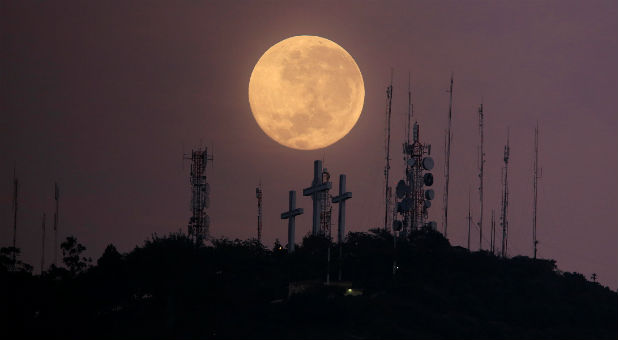Everything You Need to Know About Tonight’s Black Moon
Okay, so let’s start by getting this out of the way first. No, the world is not coming to an end.
This Friday, sky watchers in the Western Hemisphere will be treated to a relatively rare lunar event: a “black moon.” Basically, it’s the second new moon in a calendar month.
Now, social media has certainly been abuzz with moon news in recent years, between the “super moons,” “blue moons,” “blood moons,” and, a personal favorite, the “rare super blood moon total eclipse.” And now, another one is being added to our lunar palette: the “black moon.”
So here’s what you need to know for tonight’s celestial sighting:
The moon takes about 29.5 days to orbit around the Earth. The first phase is called the “new moon.” At this point, the moon is aligned with the sun on the same ecliptic longitude.
In terms of the way it looks to us on Earth, think of it like the opposite of a full moon. Instead of seeing the moon shining bright, we see … basically nothing. Maybe an outline of a moon, if we’re lucky. That’s because, from our point of view, the sun is shining directly on the moon. We are seeing the moon’s shaded backside.
Since we brought up the full moon a moment ago, here’s what that’s about. By the time the moon reaches its halfway point in its orbit around the Earth, we inconsiderate earthlings basically block the moon’s view of the sun. At that point, the moon becomes fully visible to us.
Now, because a complete lunar cycle (29.5 days) is shorter than our average month (typically 30 days), there are times when we have two full moons in one calendar month. This just happened in July 2015 and will next happen in January 2018. When this happens, it’s called a “blue moon.” It has nothing to do with the moon changing color—it’s just a term that’s used.
Getting back to the “black moon:” Think of it like a blue moon’s evil twin. Instead of two full moons lighting up the night sky in a calendar month, we get two new moons that we can’t really see. That’s all.
Like a blue moon, the black moon is fairly common, at least, in the grand scheme of things. They occur roughly every 32 months. The last one happened in 2014.
So while there will be no shortage of naysayers taking to the streets with sandwich boards proclaiming that the end is nigh, take heart. Chances are the world won’t end tonight. {eoa}














































